Silicognition LLC
Power Management
LiFePO4wered/Pi+
A full-featured LiFePO4 battery, power manager, and UPS for the Raspberry Pi
Funding ended on Sep 18, 2018 at 04:59 PM PDT.
Silicognition LLC
Power Management
Funding ended on Sep 18, 2018 at 04:59 PM PDT.
The LiFePO4wered/Pi+™ is a high-performance battery power system for the Raspberry Pi. It can power a Raspberry Pi for up to nine hours from its battery (depending on installed battery size, Raspberry Pi model, attached peripherals, and system load) and can be left plugged in continuously.
Very few people care about power. It’s not glamorous, it’s inconvenient that you need it, and it’s an afterthought in many projects. Yet, nothing works without it. Have you noticed how many project pictures hide the power supply? Most project pictures have a cable running off somewhere; even supposedly autonomous robots often have an umbilical cord run somewhere out-of-frame. People get excited about the processor, the radio, the servos, etc., but never about the power their creation needs. With LiFePO4wered/Pi+, that’s completely fine — you can concentrate on the rest of your awesome project knowing you have a reliable, clean, battery-backed power supply that will keep everything humming along.
The LiFePO4wered/Pi+ is available in two battery size options, 18650 (larger) and 14500 (smaller). The large version is a 1500 mAh 3.2 V LiFePO4 cell that supports up to 2 Amps of continuous load current. The small version is a 600 mAh, 3.2 V LiFePO4 cell that supports up to 0.75 Amps of continuous load current. Both boards can be modified to use bigger LiFePO4 cells.
The LiFePO4wered/Pi+ attaches to the host board using a header and mounting kit (see below). By default, the header is non-stackable, meaning you can’t add other boards once the LiFePO4wered/Pi+ is attached. However, there’s an option for a stackable header which does allow other boards to be attached and powered.
Every LiFePO4wered/Pi+ sold during this campaign will come with a mounting kit to mechanically secure the LiFePO4wered/Pi+ to the Raspberry Pi. The mounting kit consists of two bolts, two nuts, and two spacers.
The LiFePO4wered/Pi+ with 18650 battery is compatible with all modern, genuine Raspberry Pi products (Model A+, Model B+, 2, 3, 3 Model B+, Zero, and Zero W). The version with 14500 size battery is compatible with all of those, except the Pi 3 Model B+. LiFePO4wered/Pi+ can be used with the original Raspberry Pi Model A and B boards if you use extra wire or remove the RCA connector from the boards. In addition, we’ve confirmed that LiFePO4wered/Pi+ is compatible with the following non-Raspberry Pi single-board computers: Odroid C2, Nano Pi S2, Allwinner H3, and ASUS Tinker Board. The LiFePO4wered/Pi+ was designed to work with most single-board computers with a Raspberry Pi-compatible GPIO footprint. High power boards may only work with the 18650 battery, and modification to heat sinks or using extra headers for spacing may be necessary.
The LiFePO4wered/Pi+ was designed with hackability in mind. There are convenient connection points for easily expanding and modifying its functionality. Some examples:
The market and technology for embedded computing battery power systems is just now gaining some traction and remains ill-defined, but simple comparisons can still be made in a meaningful way.
For example, the UPS PIco looks like a strong competitor that claims to support 3 A output, but it only comes with a 450 mAh battery, which probably isn’t capable of sustaining 3 A on its own. So, is that 3 A output specification based on component ratings, valid only when it has external power, or is it something else altogether? The LiFePO4wered/Pi+ uses a boost converter rated for 8 A output, but we list it as a 2 A UPS based on real-world testing, which necessarily takes into consideration the thermal properties of the PCB, among other things. Then there’s the fact that the UPS PIco uses LiPo batteries, which are inherently a poor choice for a UPS because they quickly degrade when constantly kept fully charged.
Another example is the Geekworm’s Raspi UPS HAT, which uses a component rated for 3 A and claims to be a 2 A UPS. Yet, when I tested the Raspi UPS HAT, it consistently shut off above 1.5 A and was blazing hot. A third-party analysis confirms this, concluding that "the Geekworm UPS HAT board, as is, is not suitable as the UPS solution for a Raspberry Pi that is used as an unsupervised appliance."
Obviously, I haven’t tested every possible competitor. Instead, I rely on feedback from users, which so far has all been positive and gives me confidence the LiFePO4wered/Pi+ lives up to all its stated specifications in the real world.
Unlike other battery chemistries, lithium iron phosphate (LiFePO4) batteries are ideally suited for use in an uninterruptable power supply (UPS) because they are:
If LiFePO4 batteries are so great, why haven’t you heard of them and why aren’t they more widely used? Here are a few reasons:
LiFePO4 is one of several kinds of lithium-ion battery, each with quite different properties. LiFePO4 actually are in general use, but you might not know it because they’re often advertised simply as "lithium-ion." For example, LiFePO4 batteries are used a lot in power tools (a reason why 18 V tools are often better than 20 V tools), small vehicles (e.g., golf carts), and as an alternative to lead-acid for automotive 12 V batteries. Solar storage is another up-and-coming application.
For many people, the only important metric for batteries is capacity, and it’s not a metric that makes LiFePO4 look good, at least not at first. For example, a LiFePO4 18650 has a capacity of 1500 mAh. The same size NCA may initially have 3000 mAh capacity. However, the NCA will steadily lose capacity over its life. After a couple hundred cycles, it will have the same capacity as a LiFePO4. After a couple hundred more, it won’t hold charge. In comparison, a LiFePO4 18650 will still have a capacity of ~1200 mAh after 2000 cycles.
Nonetheless, the consumer electronics industry doesn’t care about longevity or reliability, only initial capacity. Listing a high capacity on the spec sheet attracts customers and the sale is long over by the time those customers become disappointed a few hundred charge cycles later. The obsession over initial capacity might be integral to today’s consumer mindset, but there’s also an incentive for manufacturers to keep it that way - it’s an indirect form of planned obsolescence, which leads to more sales.
One result of this mentality is that batteries with high initial capacity are the only ones manufactured in massive volumes. Another result of this is an endless stream of stories about hoverboards that catch fire, Samsung’s exploding batteries, Apple’s "batterygate" (in my opinion, from a technical perspective, Apple actually did the right thing by reducing peak load on old cells), and UPS PIco users complaining that their UPS doesn’t hold charge anymore (see review by John Bishop posted 2017-01-19).
In contrast, the LiFePO4wered/Pi+ focuses on the embedded market, where things need to last. By using LiFePO4, I trade initial capacity for safety, reliability, and longevity. People buy what’s easy to get and right now everyone stocks cheap LiCo and LiPo batteries. For LiFePO4, you usually need to import from China. I’m trying to change that.
The LiFePO4wered/Pi+ is in its fourth revision and has been thoroughly beta tested. Of course, it also benefits from the experience gained from the previous LiFePO4wered/Pi and LiFePO4wered/Pi3 products. Indeed, the firmware for all three LiFePO4wered products is built from the same source, the only difference being some compile-time definitions. As with previous versions, the Colorado Tech Shop is handling assembly. I have a fixture that programs, functionally tests, and calibrates the voltage readings on each board. Performance benchmarks have been verified on a statistically relevant sample size, but not every board is benchmarked.
Crowd Supply will be shipping all orders from their warehouse in Portland, Oregon. For more information on shipping and fulfillment logistics, see The Crowd Supply Guide. You can see the status of your order by logging in to your Crowd Supply account.
I have been working on the LiFePO4wered/Pi+ for over a year now; it’s gone through four revisions with lots of testing, all of which is publicly documented on Hackaday.io. As noted above, the firmware is shared with the LiFePO4wered/Pi and LiFePO4wered/Pi3, and has been refined and improved to become very stable over the last few years. I have had nothing but positive feedback from the beta testers who have been using the board.
If we sell more than a couple of hundred units, the biggest risk will be component lead times and manufacturing delays. There seems to be a shortage of MLCC capacitors, which I use a lot on this board. Batteries usually take a while to ship as well. To mitigate these risks, we will likely place orders for certain long-lead-time components as soon as we have a good idea of demand.
"The Raspberry Pi is an excellent platform for IoT projects — home automation, ... weather stations can all take advantage of what the Pi has to offer, but there’s one caveat that limits the board, especially for remote applications, and that’s power."
"LiPo batteries have a lot of inherent problems... LiFePO4 batteries, on the other hand, address all these issues."
"LiFePO4wered/Pi+ is designed to provide Raspberry Pi users with a “high performance” battery power system providing up to to nine hours of life from its rechargeable battery..."
"Beside the Raspberry Pi boards, the board has been tested with Odroid-C2, NanoPi S2, some Allwinner H3 boards, and ASUS Tinker Board. It should work with any board compatible with the 40-pin RPi header."
"Außerdem bringt das Modul einen Überladeschutz und automatische Anpassung des Ladestroms mit. Weitere Features: ein Power-Button, automatisches Hoch- und Herunterfahren des Raspis und eine Echtzeituhr."
Produced by Silicognition LLC in Longmont, Colorado.
Sold and shipped by Crowd Supply.
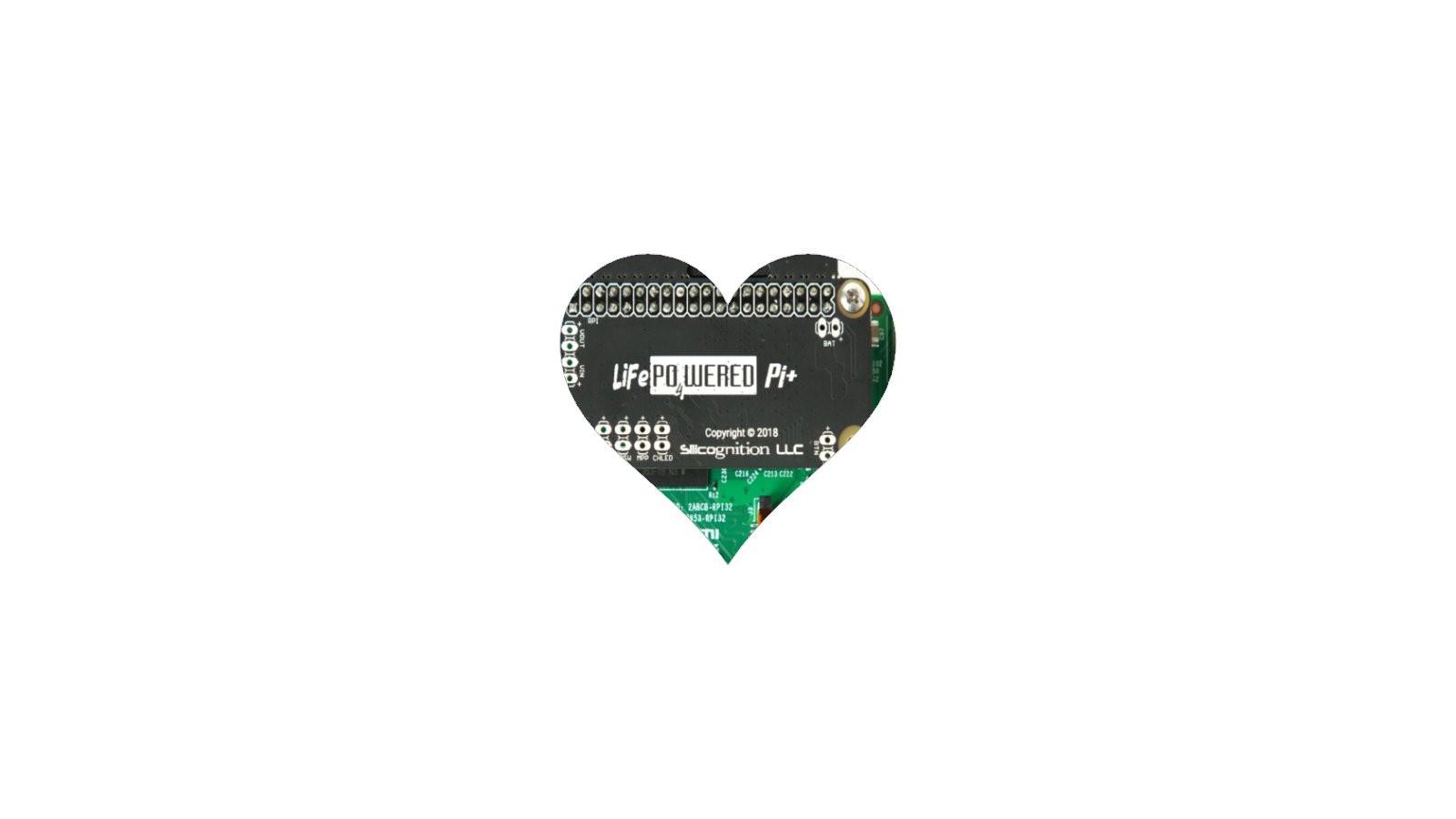
Thanks for helping power the LiFePO4wered/Pi+ project!
Want to buy this item? Check the current project page for the latest information.
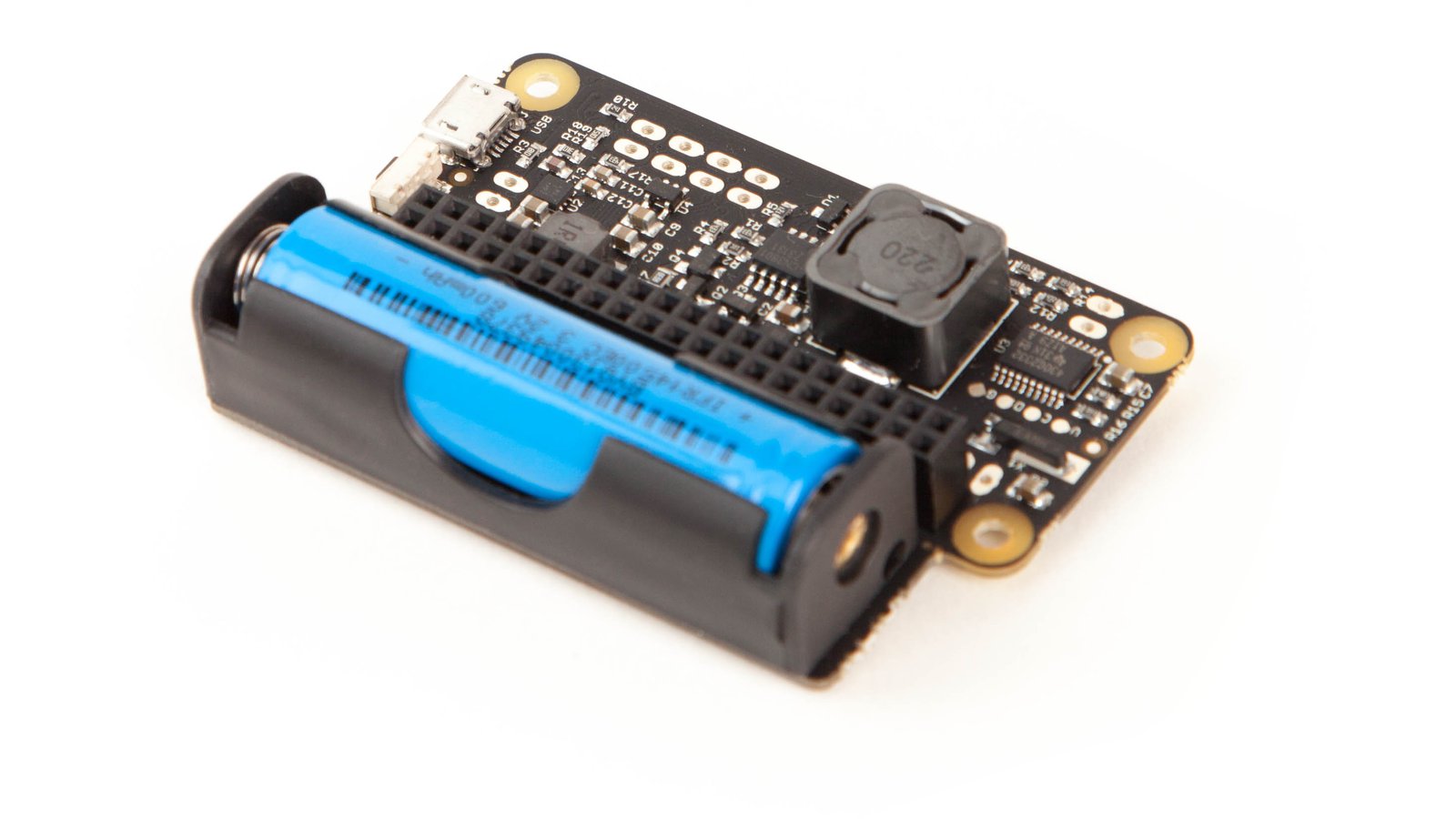
A high-performance battery power system for the Raspberry Pi. Includes a mounting kit and a 14500 battery with 600 mAh capacity at 3.2 V.
Want to buy this item? Check the current project page for the latest information.
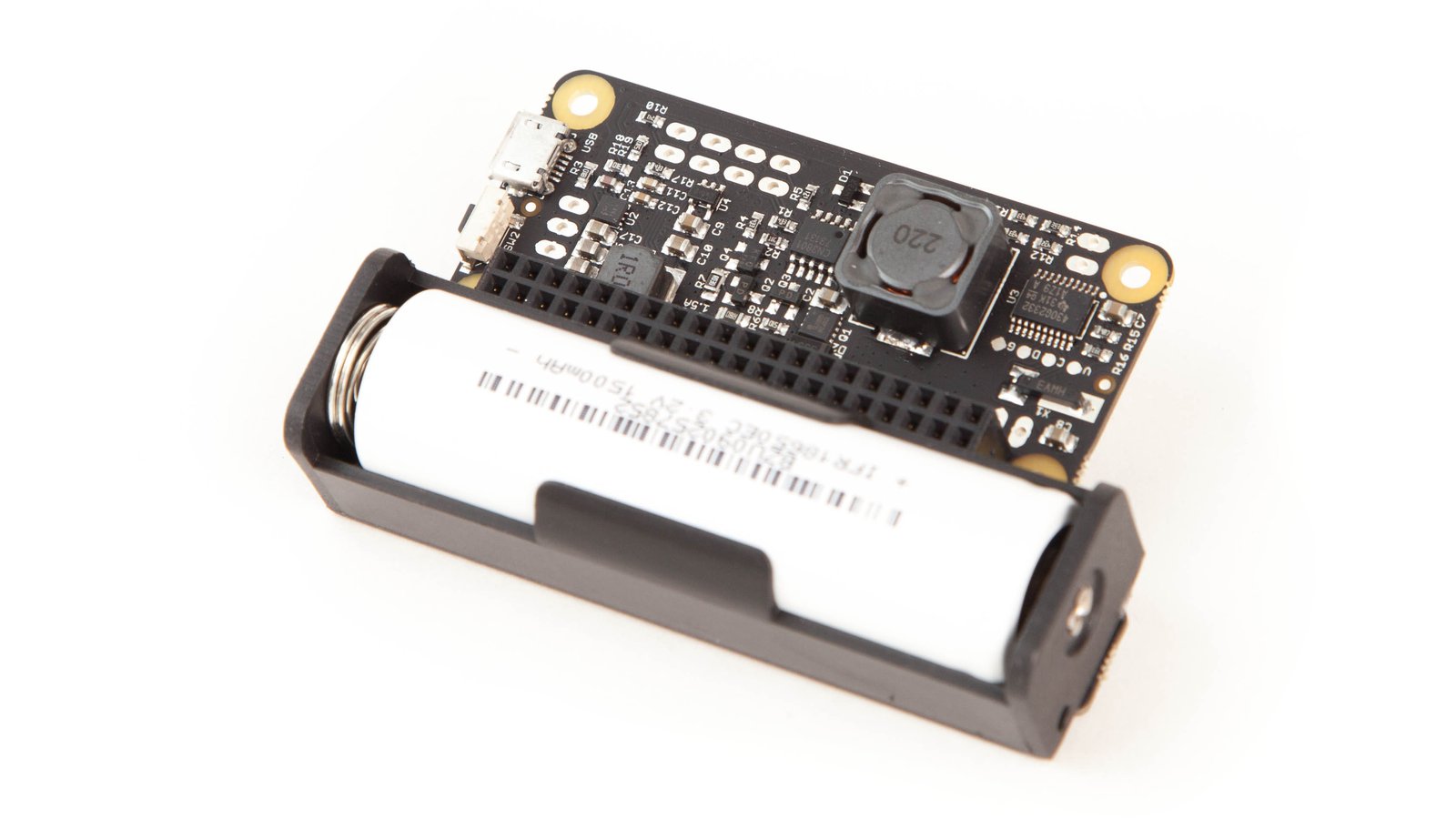
A high-performance battery power system for the Raspberry Pi. Includes a mounting kit and a 18650 battery with 1500 mAh capacity at 3.2 V.
Want to buy this item? Check the current project page for the latest information.
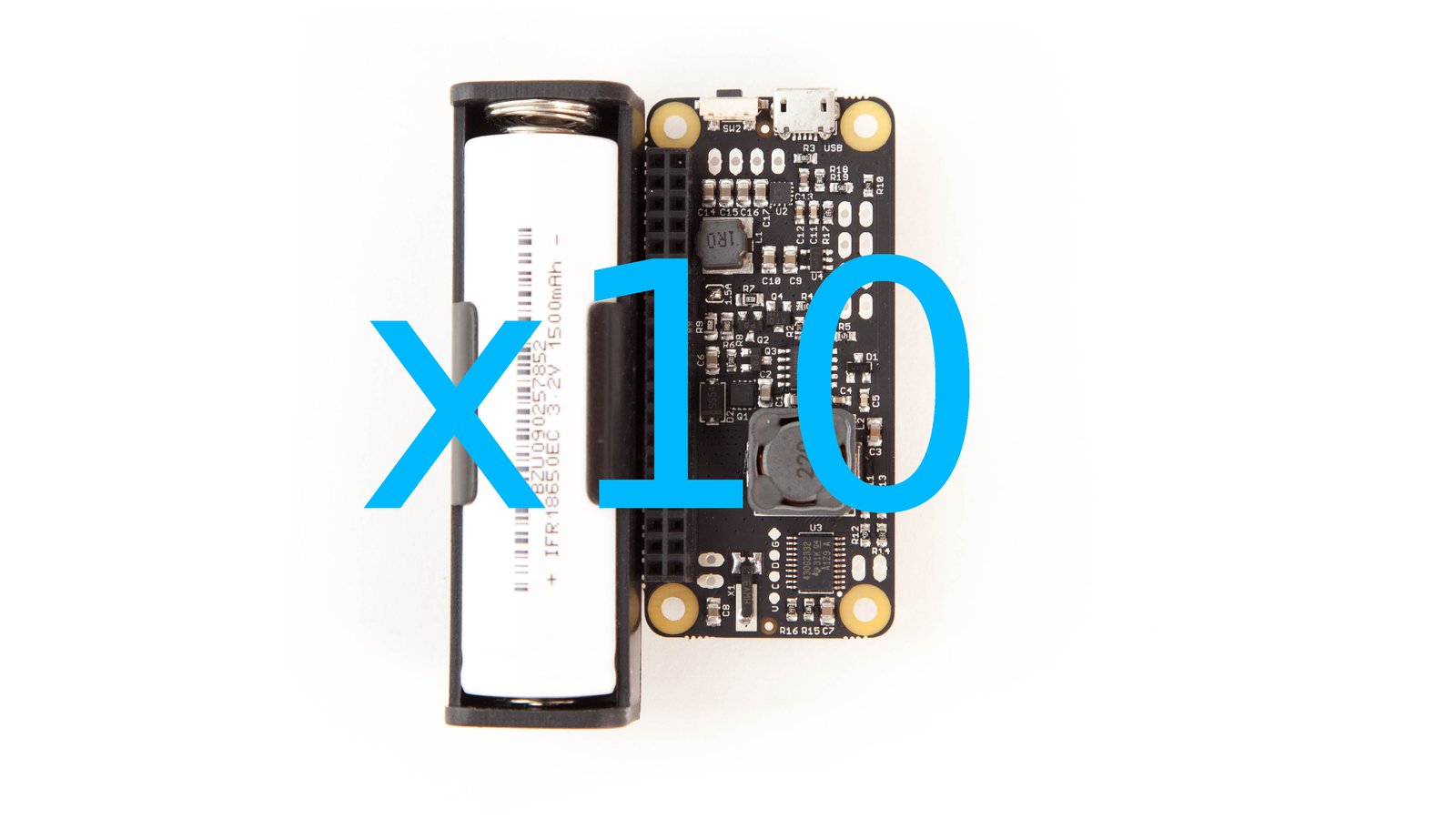
Ten high-performance battery power systems for the Raspberry Pi. Choose from two battery sizes. Batteries and mounting kits included.
Want to buy this item? Check the current project page for the latest information.
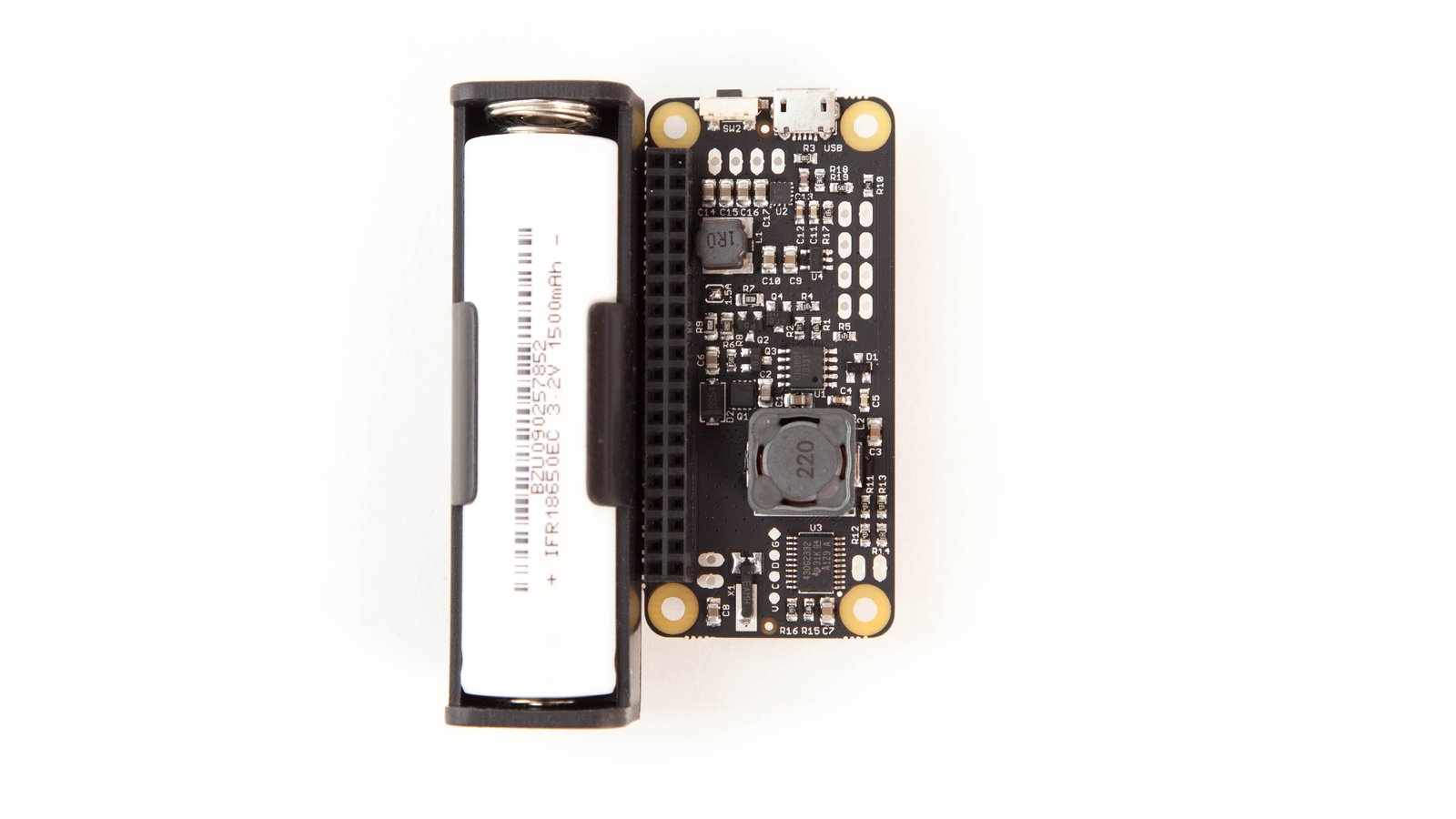
A high-performance battery power system for the Raspberry Pi, at a special early bird discount. Choose from two battery sizes. Battery and mounting kit included.
Want to buy this item? Check the current project page for the latest information.

Silicognition LLC is an electronic design services company that focuses on deeply embedded, IoT and low power systems.